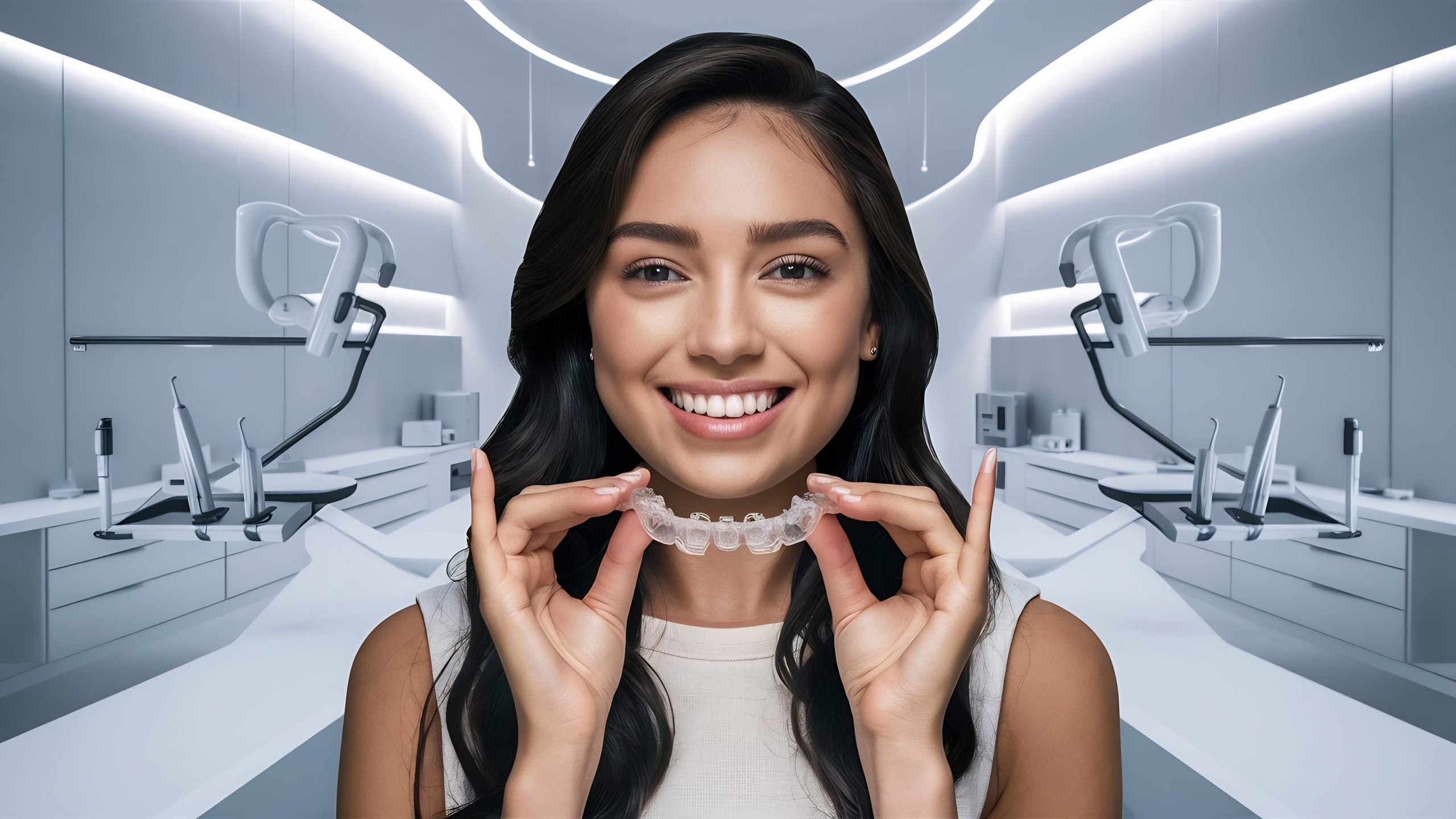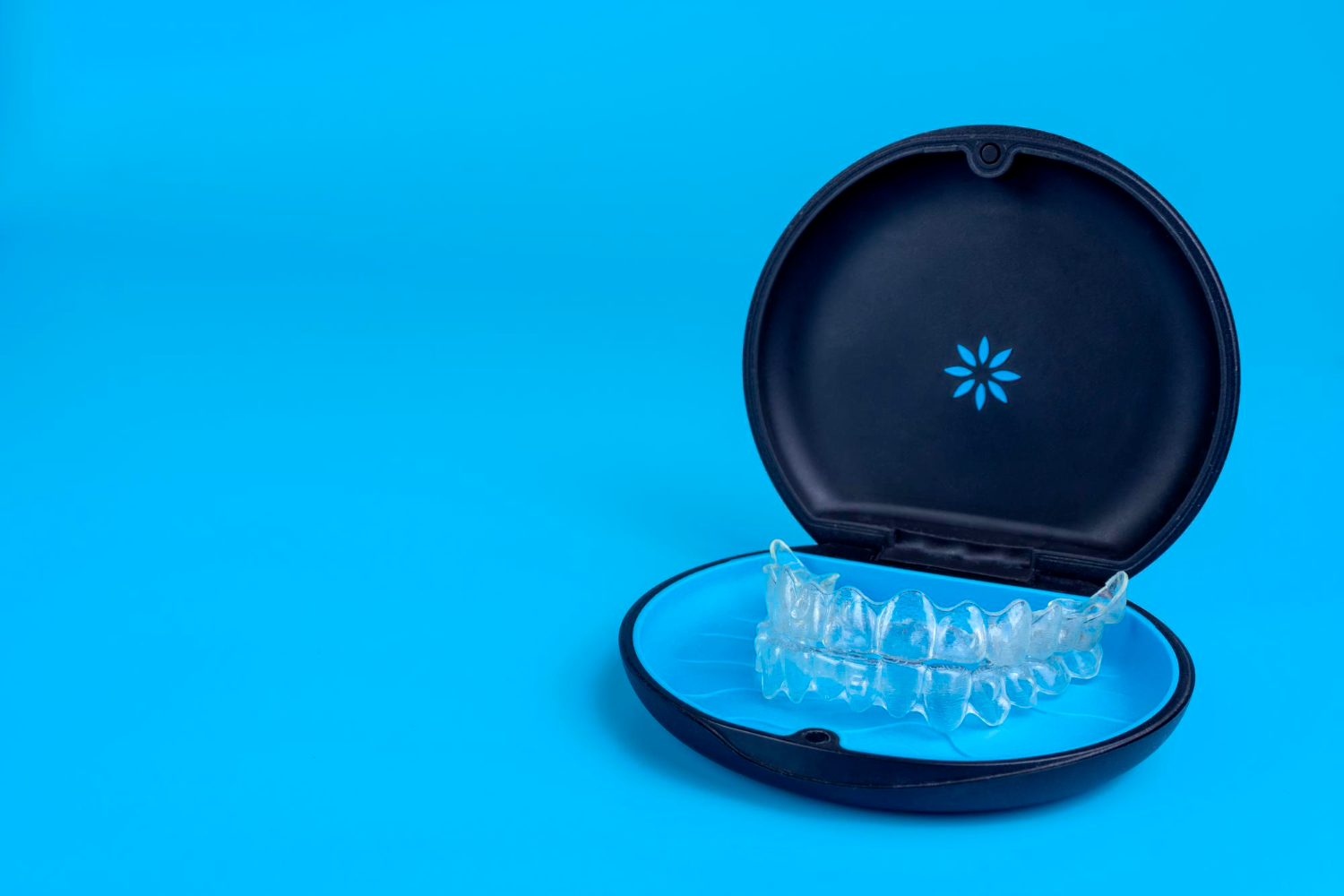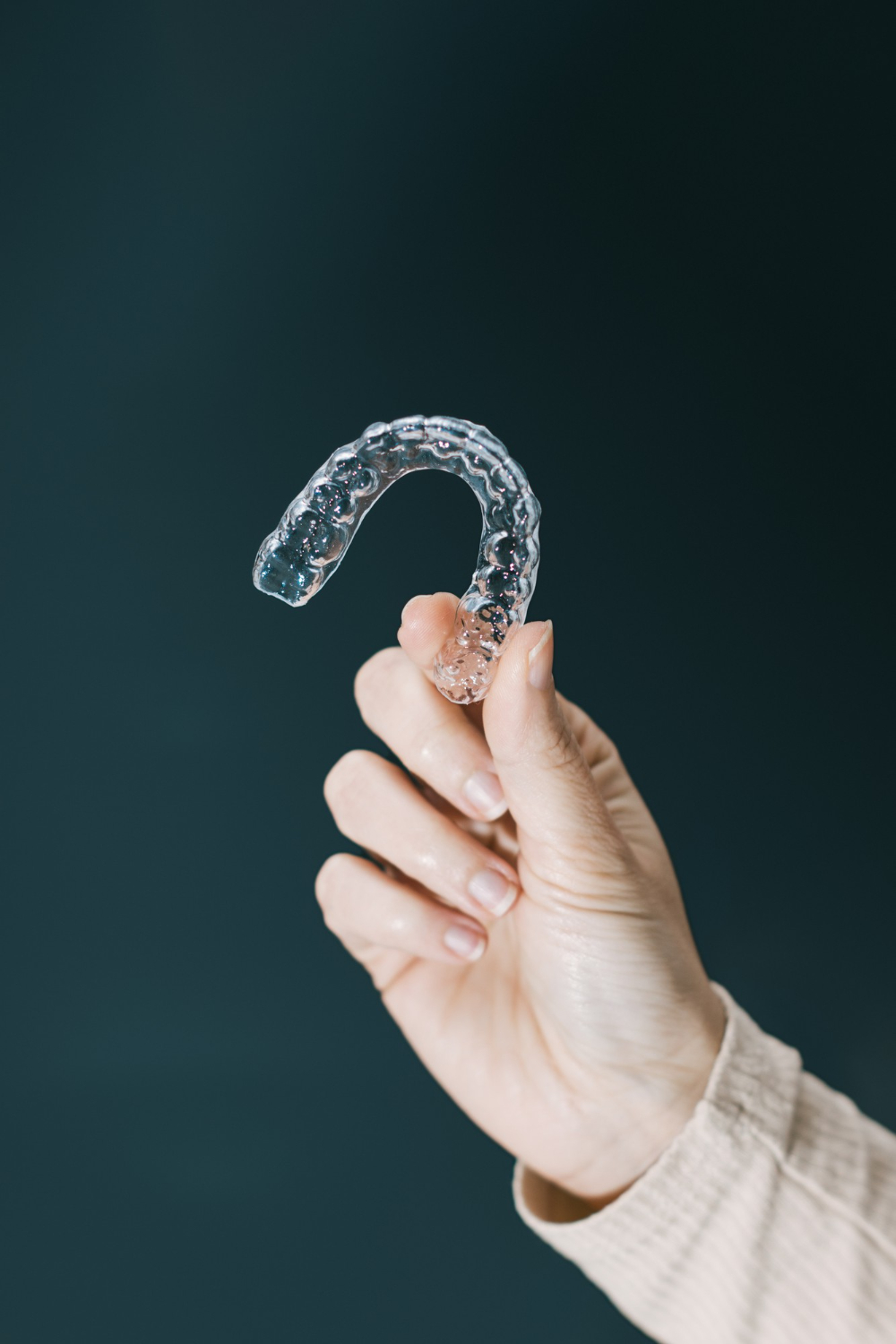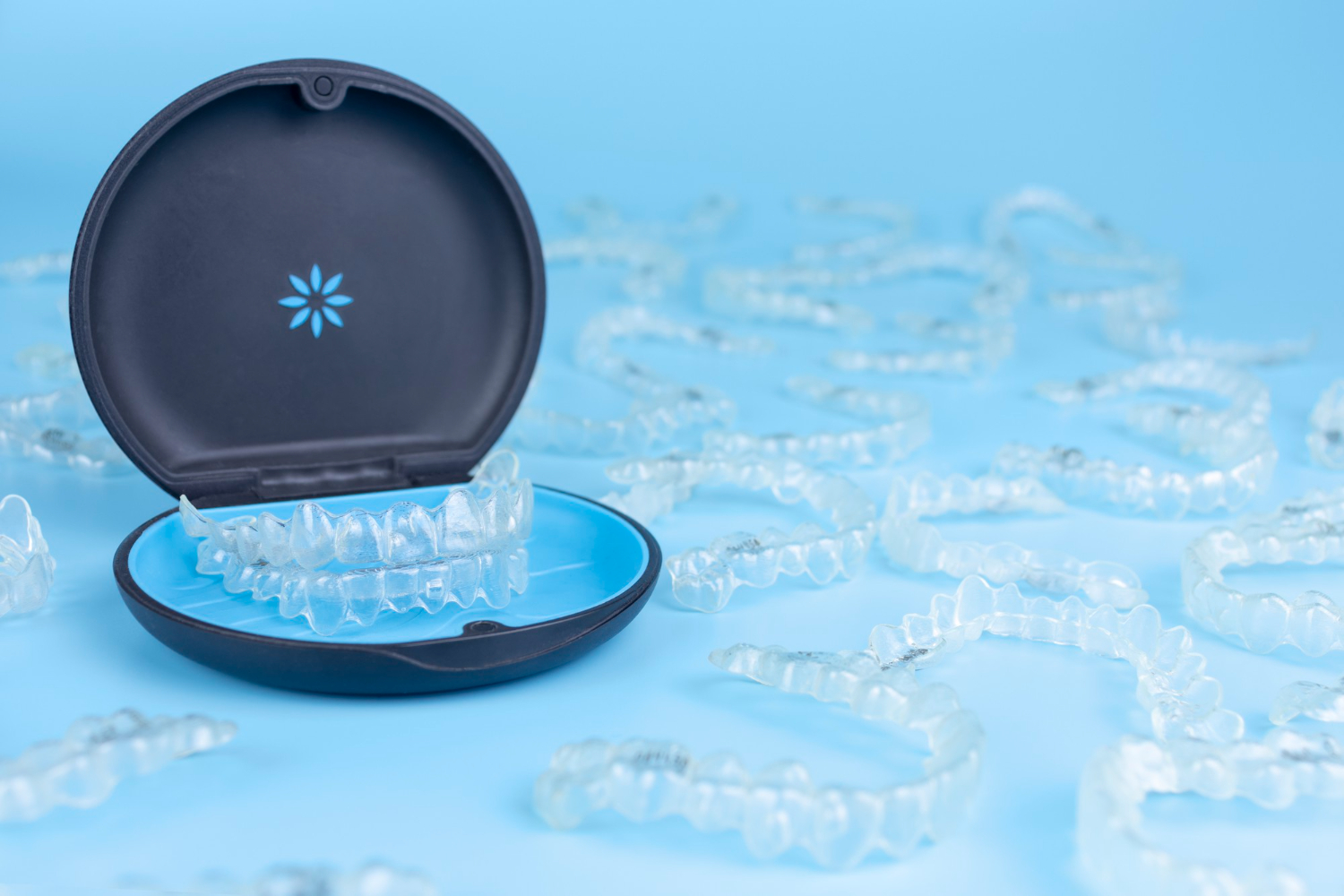Blog

The Rise of Clear Aligners
Over the past decade, clear aligners have revolutionized orthodontics. Previously dominated by traditional metal braces, the field has shifted towards more discreet, comfortable, and effective options. Leading this transformation is Invisalign, a system that has become synonymous with quality and innovation.
However, the market now includes many competing brands like ClearCorrect, SmileDirectClub, Byte, Candid, and SureSmile. If you’re wondering how Invisalign compares to these alternatives, this guide from Dr. Basel Mofti, Dubai’s trusted Invisalign Specialist, will help you understand the key distinctions.
What is Invisalign? A Trusted Pioneer
Developed by Align Technology in 1997, Invisalign is the original clear aligner system. With over 15 million cases treated globally, it’s the most trusted name in clear aligners.
Key Features of Invisalign:
- SmartTrack® Material for predictable and gentle tooth movement
- 3D iTero® scanning for accurate digital impressions
- Custom doctor-supervised treatment plans
- Capability to treat complex dental issues
“Invisalign offers a level of precision, safety, and predictability unmatched by most competitors. It’s not just about straight teeth — it’s about long-term dental health.”
— Dr. Basel Mofti
Other Clear Aligner Brands in the Market
Several brands have gained popularity, particularly for treating mild to moderate orthodontic cases.
Popular Alternatives:
- ClearCorrect: Cost-effective, used in dental clinics
- SmileDirectClub: At-home model, no routine in-office visits
- Byte: Fast results, uses HyperByte™ technology
- Candid: Hybrid system with remote monitoring
- SureSmile: In-office alternative, but less tech-advanced
While these brands offer certain benefits, their differences in quality, supervision, and case complexity support are critical when choosing the right treatment.
10 Key Differences: Invisalign vs Other Brands
Material Quality
- Invisalign: Uses SmartTrack® material — clinically tested, flexible, and durable.
- Others: Typically use generic plastic, less effective in controlled movements.
Precision and Fit
- Invisalign: Uses iTero® digital scanner — no messy molds, high accuracy, real-time 3D models.
- Others: Depend on DIY impression kits or low-grade scans — higher error potential.
Treatment Monitoring and Supervision
- Invisalign : Always supervised by certified orthodontists or dentists. Regular check-ins ensure safe progress.
- Others: Often lack direct supervision; limited remote support can delay necessary interventions.
“Professional oversight during aligner treatment is not optional—it’s essential.” — Dr. Mofti
Price and Affordability
- Invisalign: Higher upfront cost but includes expert care, premium materials, and long-term results.
- Others: More affordable initially, but may incur additional costs if retreatments or corrections are needed.
Comfort and Wearability
- Invisalign: Soft, gum-trimmed aligners reduce irritation; minimal soreness.
- Others: Often use straight-cut edges that can cause gum irritation and discomfort.
“With Invisalign, patients almost forget they’re wearing aligners.” — Dr. Mofti
Technology and Innovation
- Invisalign: Offers SmartForce® attachments, ClinCheck® simulation, and Class II correction tools.
- Others: Limited in customization; often can’t handle complex orthodontic movements.
Case Complexity Handling
- Invisalign: FDA-approved for crossbites, open bites, overbites, underbites, large gaps, and severe crowding.
- Others: Typically avoid complex cases; patients may be referred to orthodontists.
“If your smile needs more than a simple touch-up, Invisalign is the safer and more reliable option.” — Dr. Basel Mofti
Treatment Time and Predictability
- Invisalign: Provides steady, consistent progress with lower relapse risk.
- Others: Promises faster results, but often only apply to very mild cases.
Global Availability and Support
- Invisalign: Available in 100+ countries with over 100,000 trained providers.
- Others: Limited support network, especially if traveling or relocating.
Reputation and Clinical Trust
- Invisalign: Backed by decades of research, orthodontic associations, and millions of success stories.
- Others: Newer brands without long-term studies or extensive professional endorsement.

Invisalign Success Stories – Real Results
Patients of all ages have experienced transformative results:
- Teen with severe overbite → Corrected in 14 months
- Adult with crowding → Aligned in 10 months
- Corporate professional → Boosted confidence with invisible orthodontics
These examples show how Invisalign does more than improve smiles — it boosts confidence and enhances oral health.
Pros and Cons Table
Feature | Invisalign | Other Aligner Brands |
Material Quality | SmartTrack®, flexible and strong | Generic plastic, less flexible |
Professional Supervision | In-person, orthodontist-led | Limited or remote-only |
Comfort | Gumline-trimmed, smooth | Straight-cut, potential gum irritation |
Case Complexity | Mild to severe cases | Mostly mild to moderate only |
Tech Innovations | SmartForce®, iTero®, ClinCheck® | Basic, limited features |
Cost | Higher but inclusive | Lower initial cost, fewer inclusions |
Availability | Global network of providers | Limited regional support |
Treatment Time | 6–18 months (case-dependent) | Often faster for minor cases |
Trust and Reputation | 15M+ cases, orthodontic endorsements | Limited history |
Predictability of Results | High | Variable |
Frequently Asked Questions
- Is Invisalign really better than other brands?
Yes. It offers unmatched clinical support, customization, and effectiveness — even for complex cases. - Is Invisalign worth the cost?
Absolutely. The additional precision and safety justify the investment for most patients. - Can I switch to Invisalign from another aligner brand?
Yes. Many patients transition to Invisalign after unsatisfactory experiences elsewhere. - Are at-home aligners safe?
Not always. Lack of monitoring can result in misalignment or bite problems. - How long does Invisalign treatment take?
Typically 6 to 18 months depending on severity and patient compliance. - Does Invisalign hurt more than others?
Patients report less pain and irritation due to its proprietary material and smooth design.
Meet Dr. Basel Mofti – Your Invisalign Specialist in Dubai
Dr. Basel Mofti is a Diamond+ Top 1% Invisalign provider, with a reputation built on clinical excellence and patient satisfaction. He combines advanced orthodontic techniques with a caring, personalized approach.
At his Dubai clinic, you’ll receive:
- Customized treatment plans
- State-of-the-art scanning and tracking
- Continuous support throughout your journey
Whether you’re an adult professional, teen, or parent seeking treatment for your child, Dr. Mofti ensures every patient receives premium care with the most advanced Invisalign technology.
Final Thoughts: Why Invisalign is the Gold Standard
While alternative brands offer some conveniences, they often fall short in key areas like material quality, supervision, and long-term reliability.
Invisalign, especially under the care of a certified expert like Dr. Basel Mofti, remains the best choice for those who want guaranteed results, professional oversight, and superior technology.


